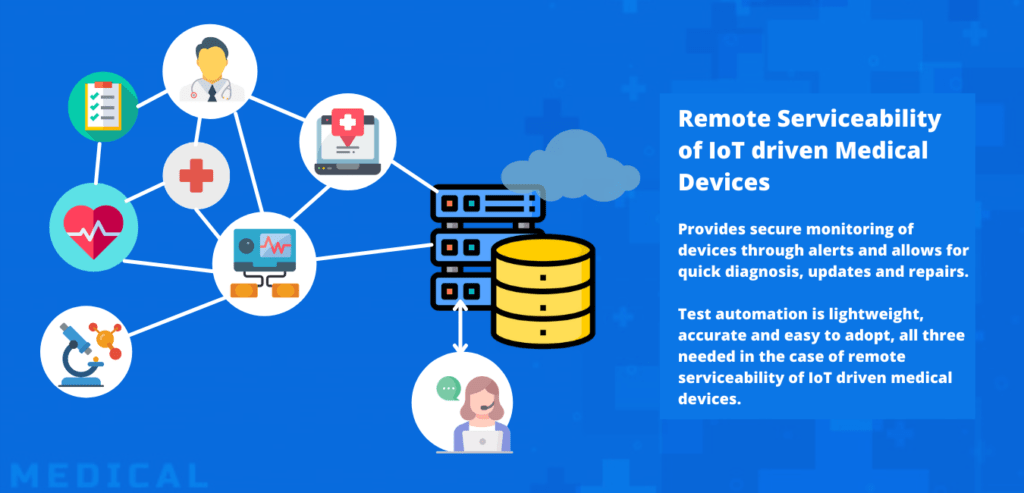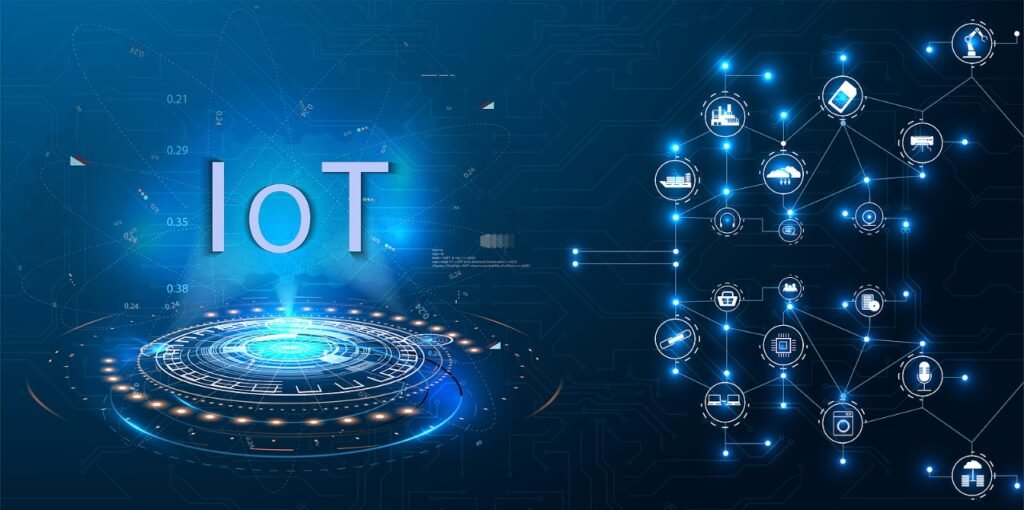Introduction
Global management consulting company Bain & company has cited in the article “Unlocking Opportunities in the Internet of Things” that Enterprises are still optimistic about Internet of Things (IoT’s) business value and potential to deliver a positive ROI. Bain also discovered that interest in remote monitoring and real-time monitoring is flourishing in IoT making this one of the fastest-growing use case categories and predicted that the combined markets of the Internet of Things (IoT) will grow to about $520B in 2021, more than double the $235B spent in 2017. Gartner cited that more than 6.4 billion Internet of Things (IoT) devices will be in use in 2016, and that number will grow to more than 20 billion by 2026. Let’s understand more about medical devices, internet of things and test automation.
IoT and Remote Serviceability
IoT technology allows the user to control the connection of vehicles, home appliances, medicinal equipment devices using embedded software in microchips to collect and exchange data remotely over a network. This connection helps collection, transfer and exchange of data.
In cases of serviceability of IoT devices, applications help with remote deployment of software. With this arrangement, we can keep contact with devices throughout its lifecycle. We can monitor the devices remotely, we can also track, measure and map its performance. We can also identify issues remotely through alerts through something as simple as handheld devices. Serviceability has not only opened many opportunities for industries at large, but also for testing and test automation in specific.
In remotely managed devices, a thorough end-to-end testing becomes critical to deliver error-free IoT-based application. Proper testing is a key to deliver, and manage an error-free IoT-based application. In remote monitoring and serviceability, it is critical to test the devices for performance, reliability, interoperability, and security. In the case of constant exchange of data, testing is involved at various levels that includes functional testing, serviceability, resilience, security, sanity and regression.
IoT driven medical devices, remote serviceability and test automation

Above all, high-tech and smart devices will be of more use in the healthcare world. Historically medical equipment devices have worked in isolation. Medical equipment devices now can communicate well with each other and enable data transfer for clinical diagnosis. So that better and safer care can be provided to patients.
Manufactures and healthcare units can now use the aspect of serviceability to manage and monitor the medical devices remotely and ensure its smooth functioning. In such cases, the end consumer need not worry about the device and the manufacturer’s remote monitoring ensures a continued relationship with the consumer. While this model enhances customer experience and makes servicing easy and effective, the software that remotely manages these devices need to work effectively as well.
Challenges in remotely managing and monitoring the IoT enabled medical devices:
- Security – security is a critical aspect for devices that we can manage remotely, specially in the cases of medical devices. Remote monitoring employs a variety of advanced security measures to make the process and devices secure and resilient. It is an important aspect to providing efficient serviceability
- Precision and Accuracy – Medical devices operate at high levels of precision and accuracy. Monitoring of such devices has to be synchronized at milliseconds to seconds. The quality assurance systems must detect minute variations, so that immediate actions can be taken on defects. Inefficient systems can cost downtime, loss in efficiency and revenues.
- Keeping pace with changes – Medical devices are reprogrammed, reconfigured and also updated on a regular basis. We can do it remotely and hence keeping pace with the changes in the remote application is important. Testing solutions/frameworks must consider this as changes have to be tested and implemented quickly.
- Building resilience and reliability – Serviceability for remote devices have a lifespan of many years. Applications managing these remote devices also have to be reliable and resilient in order to provide something long-term. We must test the application on a regular basis supporting a high level of performance to manage devices. So as to cover the entire lifecycle of the medical device.
Test Automation at the core of IoT for Medical Devices
Automating testing for IoT supported solutions will grow with the growing needs of IoT. The simple reason being test automation is lightweight, accurate and easy to adopt, all three needed in the case of serviceability of IoT for medical devices. Test automation with the TDD approach makes it easier for companies to quickly build and release updates for the devices. We can even make improvement rollouts faster with test automation tools that help track changes in the application.
With continuous testing at the heart of test automation, IoT serviceability testing can validate both the functional and non-functional aspects of IoT solutions. As a result We can then expand the testing to performance, compatibility and security as well. The dynamic system development and environment of IoT devices and related applications in healthcare finds a perfect match in Test Automation whereby there is complete sync in planning, managing, implementing and balancing agile methods and continuous monitoring of remote IoT devices.
In other words, We at AlgoShack have a track record of working with applications managing Medical Devices internet of things and test automation space. Leveraging algoQA, we have been able to automate testing for applications that use the IoT concept to connect Medical Devices covering sanity, regression, and component testing. For more information on this, get in touch with us.
References
- https://www.bain.com/contentassets/5aa3a678438846289af59f62e62a3456/bain_brief_unlocking_opportunities_in_the_internet_of_things.pdf



